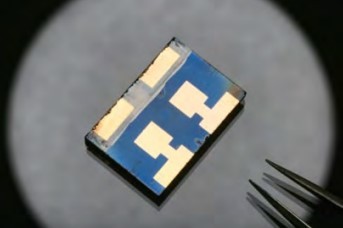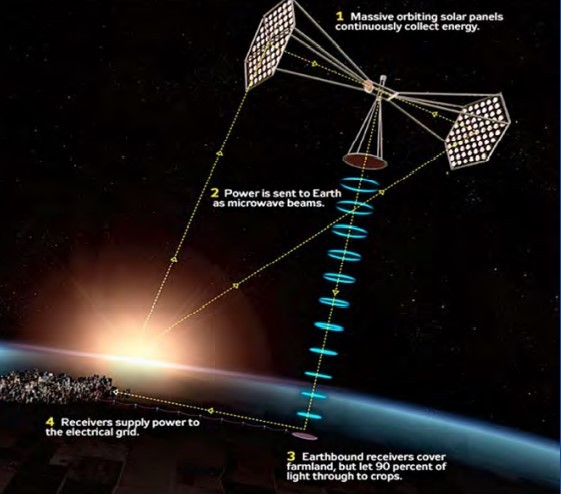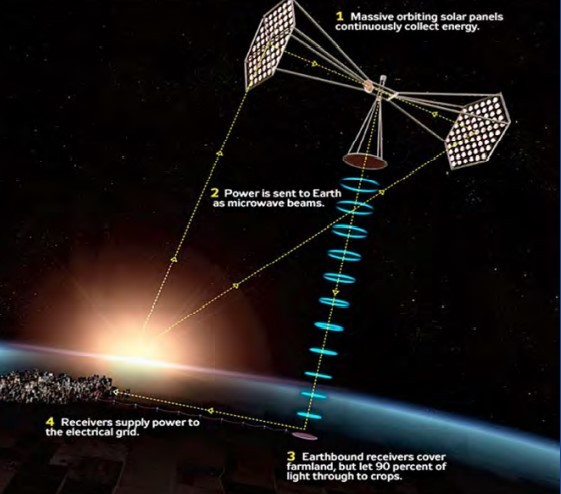How highly efficient perovskite solar cells are visualized using AFM at Department of Energy's Lawrence Berkeley National Laboratory
- 26 Sep 2016
- Volume 8
- NanoScientific Magazine, Fall 2016
Sibel Leblebici, Part Of A Team Of Scientists From The Department Of Energy'S Lawrence Berkeley National Laboratory (Berkeley Lab) Reported News In July 2016 About A Recent Discovery That Could Dramatically Boost The Efficiency Of Perovskite Solar Cells Hidden In The Nanoscale Peaks And Valleys Of The Crystalline Material, Resulting In Efficiencies In Solar Power At The Highest Percentage Ever Recorded.

Sibel Leblebici recently graduated with her Ph.D. in materials science and engineering at University of California, Berkeley. Her research focused on fabricating and characterizing emerging solar cell materials including organic semiconductors and hybrid halide perovskites. She is now a postdoctoral research at the Dept of Energy funded Molecular Foundry at Lawrence Berkeley National Lab.
“WE USED CONDUCTIVE ATOMIC FORCE MICROSCOPY TO LOCALLY MEASURE THE PHOTOCURRENT AND OPEN CIRCUIT VOLTAGAE, TWO CRITICAL PARAMETERS FOR SOLAR CELL EFFICIENCY. TO ACHIEVE REPRODUCIBLE RESULTS ON THE VERY ROUGH PEROVSKITE SURFACE, WE EMPLOYED THE PARK SYSTEMS PINPOINT™ SCAN MODE, IN WHICH THE CONDUCTIVE AFM TIP APPROACHES THE SURFACE, REACHES A SPECIFIC FORCE BETWEEN THE TIP AND THE SAMPLE, RECORDS THE CURRENT, AND RETRACTS THE TIP AT EACH PIXEL.”
The Molecular Foundry is a Department of Energy-funded nanoscience research facility that provides users from around the world with access to cutting-edge expertise and instrumentation in a collaborative, multidisciplinary environment

lead Scientist, opto electronics research group at the Molecular Foundry of the Lawrence Berkeley National Laboratory.
“Our goal is to image, understand and eventually control opto electronic process in novel light harvesting materials and architectures. Currently we are focused on characterizing opto electronic properties in inorganic semiconducting and metal oxide nanowire systems, inorganic nano crystal assemblies and small molecule organic semiconductors. “ “We are blessed to be part of the Molecular Foundry – one of the most interdisciplinary and collaborative nano research centers. Six complementary facilities integrate the expertise of physicists, chemists, biologists and engineers, covering in house state of the art synthesis and fabrication of nanoscale materials, their characterization and the modeling to develop a complete understanding of physical and chemical properties of nano building blocks.” ”We don’t use FREE solar power today, which is an unfortunate detriment to humanity and our planet. I would gladly spend 5X more on my energy each month to leave a safe planet for my children to inhabit. Humanity makes IPhones that fit in our back pocket while containing more computing power then the guidance computers for the Apollo 11 mission. We really should be able to develop materials that cost effectively converts the free sun energy into electrical and chemical energy.”

Perovskite solar cell prototype, These solar cells convert photons to electricity more rapidly than any other material to date, which has gone from just 3 percent in 2009, now predicted to reach up to 31 percent based on new information on how to maximize them.
Solar cells made from compounds that have the crystal structure of the mineral perovskite are inexpensive and easy to fabricate, like organic solar cells. These solar cells convert photons to electricity more rapidly than any other material to date, which has gone from just 3 percent in 2009, now predicted to reach up to 31 percent based on new information on how to maximize them. More research is needed, but the promising studies reveal a significant possibility for increasing efficiency of perovskite solar cells to up to 31 percent.
This research was performed using a state-ofthe-art atomic force microscopy technique, developed in collaboration with Park Systems, which utilizes a conductive tip to scan the material's surface. The method also eliminates friction between the tip and the sample. This is important because the material is so rough and soft that friction can damage the tip and sample, and cause artifacts in the photocurrent.
Why did you decide to investigate perovskites?
I chose to investigate hybrid halide perovskites for solar cells because I was extremely excited by the rapid increase in efficiency from approximately 3% in 2009 to over 22% today. These high efficiencies are remarkable for a solution processable, polycrystalline solar cell material. When I became interested in perovskites a few years ago, the majority of the research focused on methods to improve solar cell efficiency by optimizing the film growth conditions and the energy level alignments for the other layers in the solar cell. There had also been some research on understanding the macroscale electronic properties of the material. I, however, wanted to learn more about the perovskite material on the nanoscale to understand what might be limiting its efficiency.
What did you discover about the wide variety of performance of perovskites and how were you able to produce the results?
We discovered that there is significant performance heterogeneity within individual perovskite grains in a polycrystalline perovskite film and that this heterogeneity is facet dependent. This facet dependence is due to some facets having a significantly higher density of surface trap states than others. We used conductive atomic force microscopy to locally measure the photocurrent and open circuit voltage, two critical parameters for solar cell efficiency. To achieve reproducible results on the very rough perovskite surface, we employed the PinPoint scan mode, in which the conductive AFM tip approaches the surface, reaches a specific force between the tip and the sample, records the current, and retracts the tip at each pixel. Using PinPoint mode allowed us to eliminate all artifacts in the current measurement that result from a rough surface.
How might your discovery lead to better solar cells?
We discovered that the perovskite solar cell performance is highly dependent on the facet exposed. As a result, if the polycrystalline films can be grown such that only the high performing facets interface with the electrodes, the overall solar cell efficiency can be greatly improved.
Can you explain how you worked with Park Systems (Atomic Force Microscope manufacturer) to create the right tool for your research?
We worked together with Park Systems to improve the PinPoint mode capabilities such that it was optimized for conductive AFM. We visited the Park Systems office in Santa Clarato explain what we wanted to measure and to better understand the capabilities of the system and engineers from Park Systems often visited our lab to suggest improvements. Additionally, we suggested improvements to the software to have greater control over the PinPoint mode settings.
What was the technique that was developed and how was it used? Was this new AFM tool essential to your findings?
Without the PinPoint scan mode and the improvements that were made specifically for measuring current, the experiments would have been much more challenging and the current images would have many artifacts. Using this new technique allowed for much more reproducible current measurements.
What is the estimated increased efficiency in the higher performing facets you found in perovskite and why are these facets better at light harvesting?
We observed up to an order of magnitude difference in photocurrent and differences of open circuit voltage up to 0.6 V between facets of the same grain. These results suggest that the efficiency of perovskite solar cells could approach the theoretical efficiency by growing the film such that only the high performing facets interface with the electrodes. These high performing facets have a very low surface defect density; thus, they have a greater short circuit current and open circuit voltage.
How is the information at Molecular Foundry shared word-wide with other researchers?
The Molecular Foundry is a user facility, meaning that anyone in the world can submit a proposal to use cutting-edge expertise and instrumentation for their research. We also have research groups within the Molecular Foundry that regularly publish research articles.
What other research projects are you working on or plan to work on in the future?
We are currently working to determine the crystallographic orientation of the high and low performing facets in hybrid halide perovskites.

SOLAR POWER FROM SPACE
A Solar Power Satellite In Space Would Provide Continuous Power To People On Earth Because It Would Have Endless Access To Sunlight—Without Interferences From Clouds, The Atmosphere, Or Night—And Would Not Need Storage. Studies By A Team At The Naval Research Lab Concluded What It Is Definitely Technically
Feasible, But The Question As Always Remains The Economics. Space Solar Is Clean And Constant, Allowing It To Serve As A Baseload Source. “There’S No Other Energy Source Known That Could Switch From One Part Of The Planet To Another Part So Quickly,” Said Space Entrepreneur And Former Nasa Executive John C. Mankins, Whose Solar Power Satellite Design, Sps-Alpha, Appears In His 2014 Book, The Case For Space Solar Power.

Basic concept of solar energy collected and delivered via satellite and microwave technology. (Illustration: Courtesy Artemis Innovations)
